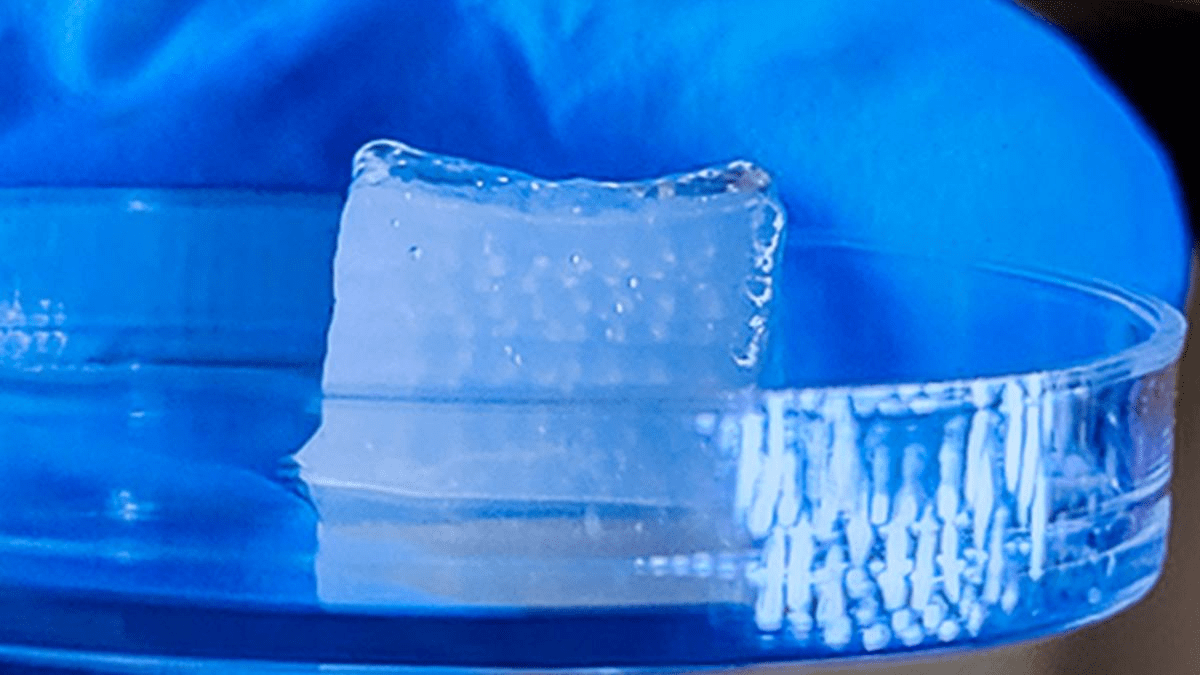Review sản phẩm
Revolutionary 3D Bioprinting Achieves 10x Speed For Functional Tissues
Revolutionary 3D Bioprinting Achieves 10x Speed For Functional Tissues
Các nhà nghiên cứu tại Đại học Penn State đã phát triển một kỹ thuật in sinh học 3D đột phá mang tên Hệ thống Sản xuất Mô Tích hợp Thông lượng Cao cho In sinh học (HITS-Bio). Phương pháp này cho phép tạo ra các mô sinh học chức năng một cách nhanh chóng, đạt tốc độ gấp 10 lần so với các phương pháp hiện tại trong khi vẫn duy trì khả năng sống sót cao của tế bào.
HITS-Bio sử dụng các cụm tế bào, được gọi là spheroids, để tạo ra các mô có mật độ tương đương với mô tự nhiên. Công nghệ này không chỉ tăng tốc độ sản xuất mà còn đảm bảo tính chính xác và hiệu quả trong việc tạo ra các cấu trúc mô phức tạp.
Những tiến bộ này mở ra tiềm năng to lớn trong lĩnh vực y học tái tạo, cấy ghép mô và nghiên cứu dược phẩm, giúp rút ngắn thời gian phát triển và cải thiện chất lượng của các mô được tạo ra.
#3DBioprinting #YHọcTáiTạo #CôngNghệSinhHọc #ĐộtPháKhoaHọc #PennState #HITSBio #MôChứcNăng #NghiênCứuYHọc
Researchers at Penn State have developed a groundbreaking 3D bioprinting technique called the <strong>High-throughput Integrated Tissue Fabrication System for Bioprinting</strong> (HITS-Bio). This method enables the rapid creation of functional biological tissues, achieving speeds ten times faster than current approaches while maintaining high cell viability.
HITS-Bio uses cell clusters, known as spheroids, to fabricate tissues with a density comparable to natural human tissues. Unlike traditional methods, which often damage cells or are too slow for practical application, HITS-Bio employs a digitally controlled nozzle array.
This system uses multiple nozzles capable of precise three-dimensional movement, allowing the simultaneous manipulation of spheroids. This innovation enables the rapid assembly of complex tissue structures with customized patterns, making it a significant advancement in bioprinting.
In testing, the researchers successfully fabricated a one-cubic-centimeter cartilage tissue using 600 spheroids in under 40 minutes. This outpaces traditional techniques and retains more than 90% cell viability. The team also demonstrated the technique’s clinical potential by repairing bone tissue in a rat model.
Using HITS-Bio, spheroids programmed with microRNA were directly printed into a skull wound during surgery, accelerating bone healing. After three weeks, the wound showed a 91% healing rate, and 96% after six weeks.
The development of HITS-Bio represents a major step toward creating lab-grown tissues and organs for medical use. Future efforts are focused on integrating blood vessels into bio-printed tissues, potentially expanding its applications to organ transplantation and advanced disease modeling. This technique holds promise for revolutionizing regenerative medicine by enabling faster, more effective tissue and organ fabrication.
<!-- Web Push subscription button-->
<p>Filed in <span id="breadcrumbs">Medical</span>. Read more about 3D Printing, Medical and Medicine. </p>
Khám phá thêm từ Phụ Kiện Đỉnh
Đăng ký để nhận các bài đăng mới nhất được gửi đến email của bạn.




